Race analysis by Nick Bull | Main photo by SWpix.com / Cor Vos
If the speculation at the start of the Tour de France suggested that the GC contenders would strike early in case of a COVID curtailment proved to be wide of the mark, the way Monday’s first Giro d’Italia summit finish unfolded felt like the champion was about to be crowned after just three stages.
Perhaps it’s a case of being careful what you wish for. Barely five weeks ago, after the Tour’s somewhat unusual decision to include two mountain finishes in the opening six stages provided as much excitement as they did knock-out blows (read: none), social media was alight with people calling the race boring. Look away now, folks: the Giro’s general classification after today’s stage finish atop Mount Etna already makes for grim reading for anybody wanting a three-week, multifaceted battle for the maglia rosa. A startlist that looked short of top-level contenders going into Saturday’s frightening foreword in Palermo already looks thinner than somebody on a ketone diet. The top 10 are already separated by 75 seconds; it took nine stages (including four days in the mountains) for the Tour’s GC contenders to be spread out that much. Milan is a long way away, and I’m not sure I mean that in a good way.
With his 2018 Tour performance looking like the only flawless Grand Tour he’ll ever put together, Geraint Thomas lost 12’19” after crashing – heavily and incredibly unfortunately – in the neutralised zone. The Welshman has had his last two Giro starts ruined by a police motorcycle and a bidon. Some guys get all the luck. Thomas, evidently, isn’t that guy. Simon Yates (pictured) may not have started this year’s Giro off the back of a prediction like the one in 2019 that dramatically inflated his form but he is already in turning-attention-to-stage-wins territory.
Vincenzo Nibali and Rafal Majka both looked good, the former (and two-time winner) ominously so, as the race started to feel a little like the 2014 Tour de France sequel that nobody asked for. At least the new race leader, Deceuninck-Quick Step’s João Almeida, Harm Vanhoucke (Lotto Soudal, fifth overall) and UAE-Team Emirates’ American rider Brandon McNulty (eighth) are representing the youth among a top 10 that contains Steven Kruijswijk (33), Nibali and Jakob Fuglsang (both 33); and 37-year-old Domenico Pozzovivo.
28.6KM TO GO
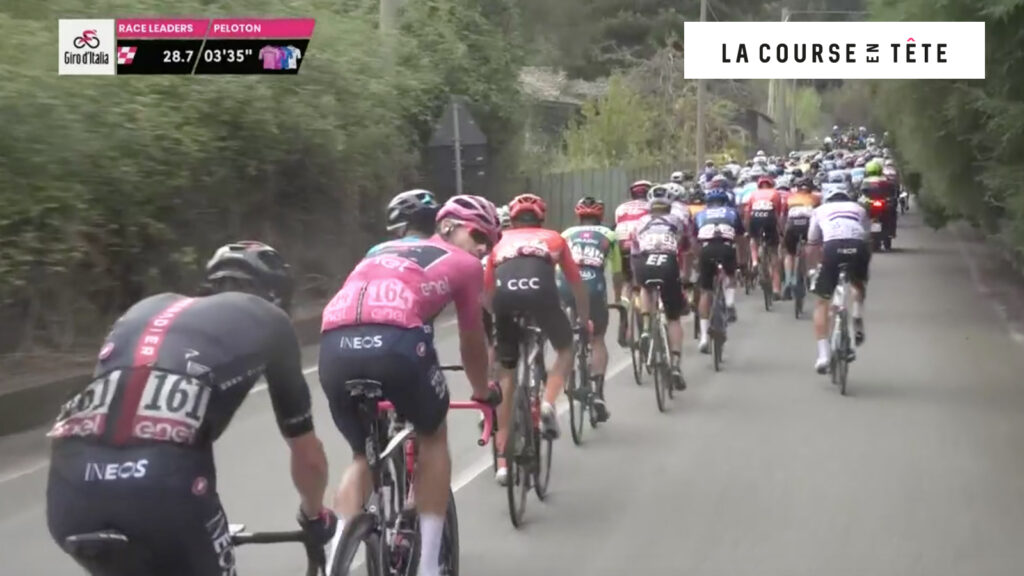
Disaster had already struck for Thomas on the way out of Enna this morning, but the severity of his fall only became clear in between the race’s two intermediate sprints. Dropped over 10 kilometres out from the start of Mount Etna, INEOS afforded him support from race leader Filippo Ganna (who had little hope of retaining the race lead on the climbs) and Salvatore Puccio. The sight of British champion Ben Swift, who had initially dropped back to help his fallen team-mate, being freed of his responsibilities only served to outline that the Welshman’s Giro was effectively over seven hours into the race.
9.5KM TO GO
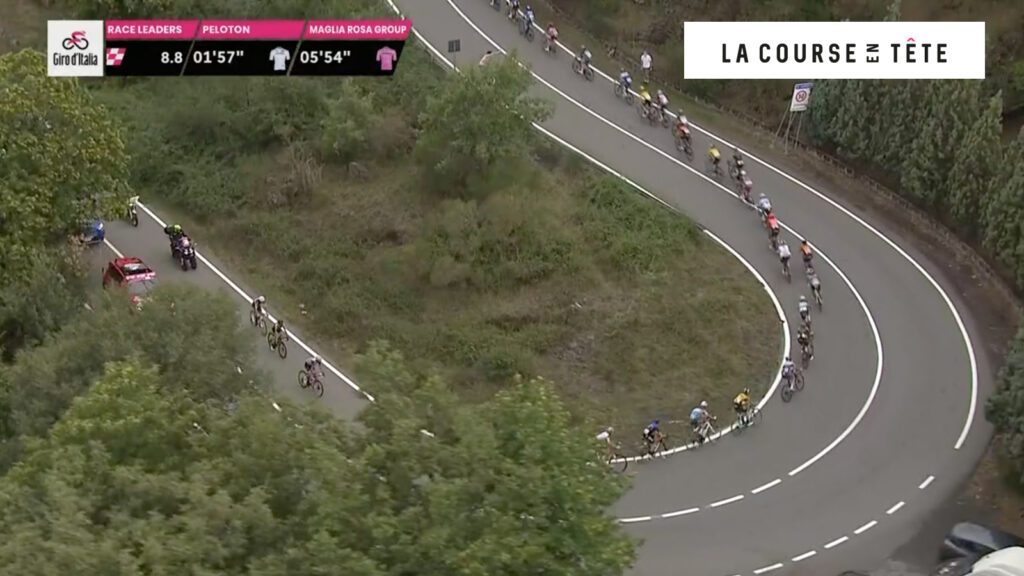
British fans at 3:08pm (local time) today: “Well, at least we’ve still got Simon Yates!”. British fans at 3:09pm today: “When does the Vuelta start?”. As BORA-hansgrohe’s Matteo Fabbro began increasing the pace at the head of the peloton, Yates became the second high-profile British rider to be dropped. Two years ago he moved into the pink jersey atop Etna after a tactical masterclass from his Mitchelton-Scott team on the mountain. This time around he trails his GC rivals by three minutes. Yates will likely need multiple repeats of his form and team’s strategy from that day in 2018 if he is to win his second Grand Tour this month. I wouldn’t bet on it.
4KM TO GO
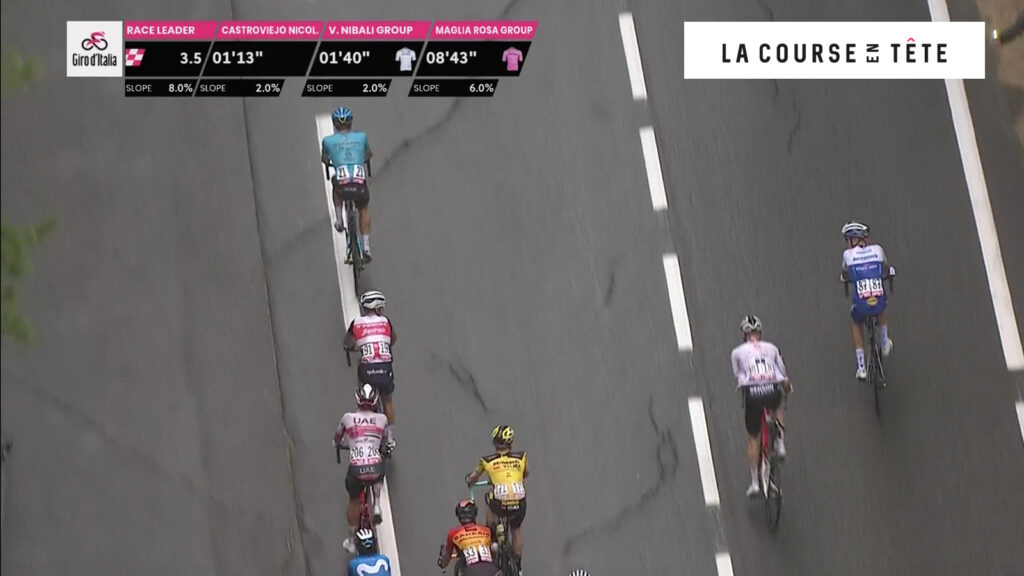
Dutchman Wilco Kelderman continued Team Sunweb’s impressive post-lockdown form on Etna today, gaining 12 seconds on the few genuine contenders left following an attack that his rivals seemed entirely unflustered by. His move was triggered by a brief acceleration by Fuglsang upon his first visit to the head of the peloton. Deceuninck’s Fausto Masnada neutralised it, prompting everybody but Kelderman to sit up. Off into the distance he rode, a move that attracted next to no attention from the race’s TV producer.
“Coming towards the finish we saw there was not really one team that was able to control the group on the climb, so it was good to jump and attack and see what happened,” he said. “It turned out to be a good decision.” His time gain may have been somewhat modest, but he could be a podium contender based on his Grand Tour record (seventh in the 2014 Giro, three-time top-10 finisher in the Vuelta).
3KM TO GO
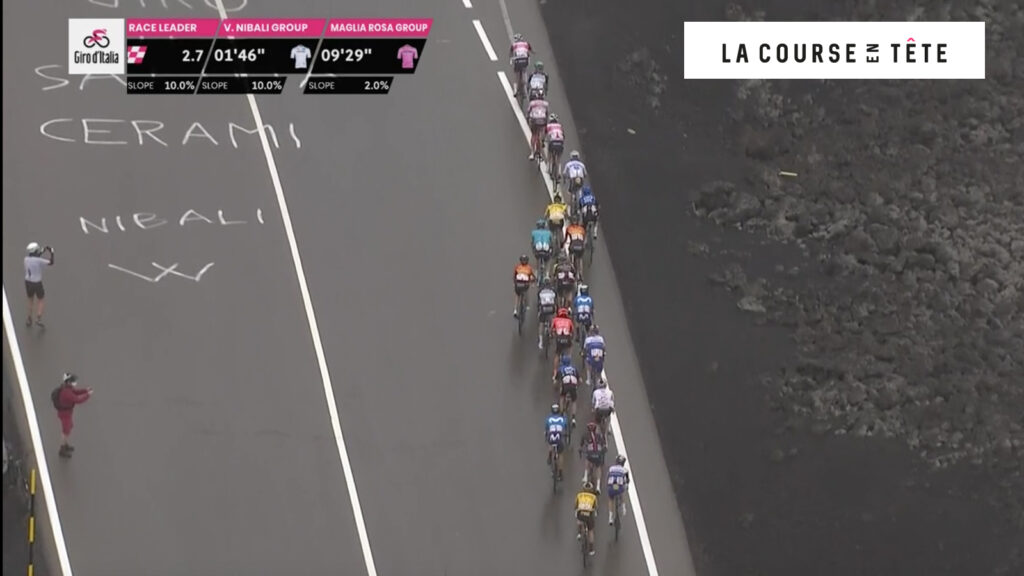
For anybody left cold by the sight of Team Jumbo-Visma riders controlling mountain stages during the Tour, the state of play as the reduced peloton hit the steepest and most exposed part of Mount Etna will surely have pleased them no end. Only 21 riders remained in contention at this point; Deceuninck-Quick Step had the largest representation with Almeida, Masnada and (the soon-to-be-dropped) James Knox. Six other teams had two riders. Fuglsang (Astana), McNulty (UAE), Lucas Hamilton (Mitchelton-Scott), Jai Hindley (Sunweb), Tao Geoghegan Hart (INEOS) and Ilnur Zakarin (CCC) were all flying solo.
This is potentially the glimmer of hope for the rest of the Giro: if teams couldn’t control the race on this, a one-climb mountain stage, things in week three could ripe for a shake-up of Alberto Contador (Fuente Dé, 2012 Vuelta) or Chris Froome (Bardonecchia, 2018 Giro) proportions. Fuglsang is potentially the most vulnerable here, having already lost team-mates Miguel Ángel López (following a stage one crash) and Aleksandr Vlasov (stomach problems).
2.7KM TO GO
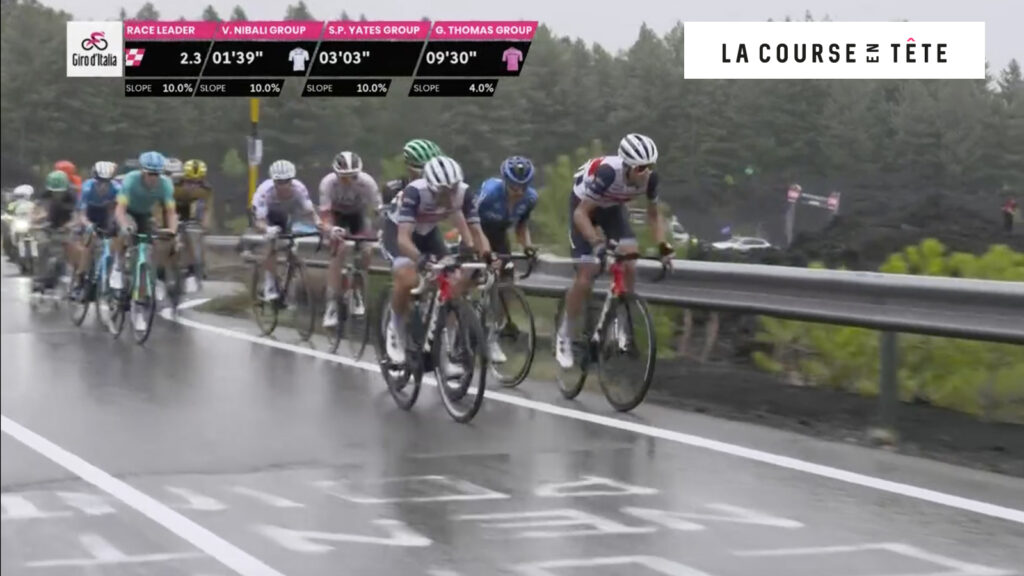
Nibali launches his first attack of the race, a move that owed a lot to his team-mate Gianluca Brambilla. A Giro and Vuelta stage winner in his own right, Brambilla laid the foundations for this kick by driving at the head of the GC group as they turned into a cross-headwind on the last truly exposed section of the climb. His acceleration barely lasted 250 metres but, after looking over both shoulders to assess the hurt put on by his domestique, Nibali jumps clear.
It’s a successful attack: only Pozzovivo, Majka, Fuglsang, Kruijswijk, Pello Bilbao (Bahrain-McLaren) and Antonio Pedrero (Movistar) can follow. Nibali’s kick is followed soon after by another Fuglsang acceleration, although this one is far more effective than his earlier move. The GC group is whittled down even further: Nibali, Pozzovivo and Majka follow with apparent ease. Kruijswijk cannot hold the wheel but lurks in close proximity.
1.6KM TO GO
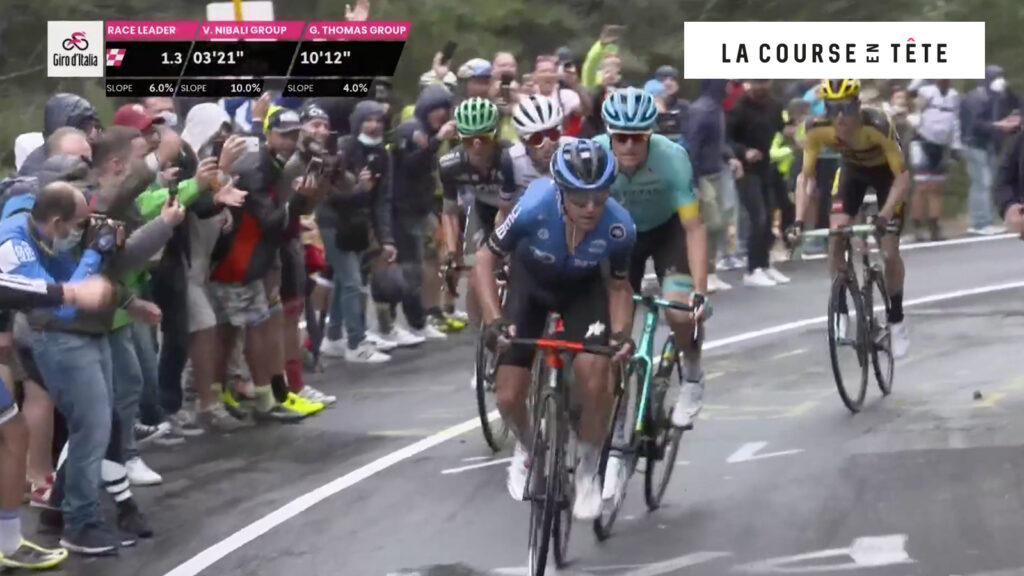
A combination of a reduced pace and a steeper section of the climb allows Almedia, Bilbao and Pedrero to close the gap to the GC favourites to a matter of metres. This triggers Pozzovivo into life: the six-time top-10 finisher in this race makes the stage’s final key attack. Confirming what we saw when Fuglsang kicked less than a kilometre earlier, only the Dane, Nibali and Majka can follow the evergreen Italian’s acceleration.
The wacky nature of this Giro after just three stages is evident in the standings. Majka moved up 47 places today to 11th. Fuglsang and Kruijswijk went from sitting in the mid-40s at the start of the day to rounding out the top 10. However, the GC is still distorted by Saturday’s individual time trial. From what we saw today, only five riders from the first 11 in the standings looked to be in race-winning form. Milan, may I remind you, is 18 stages away.
You can find more of Nick Bull’s race analysis on Twitter
Main photo: SWpix.com / Cor Vos

